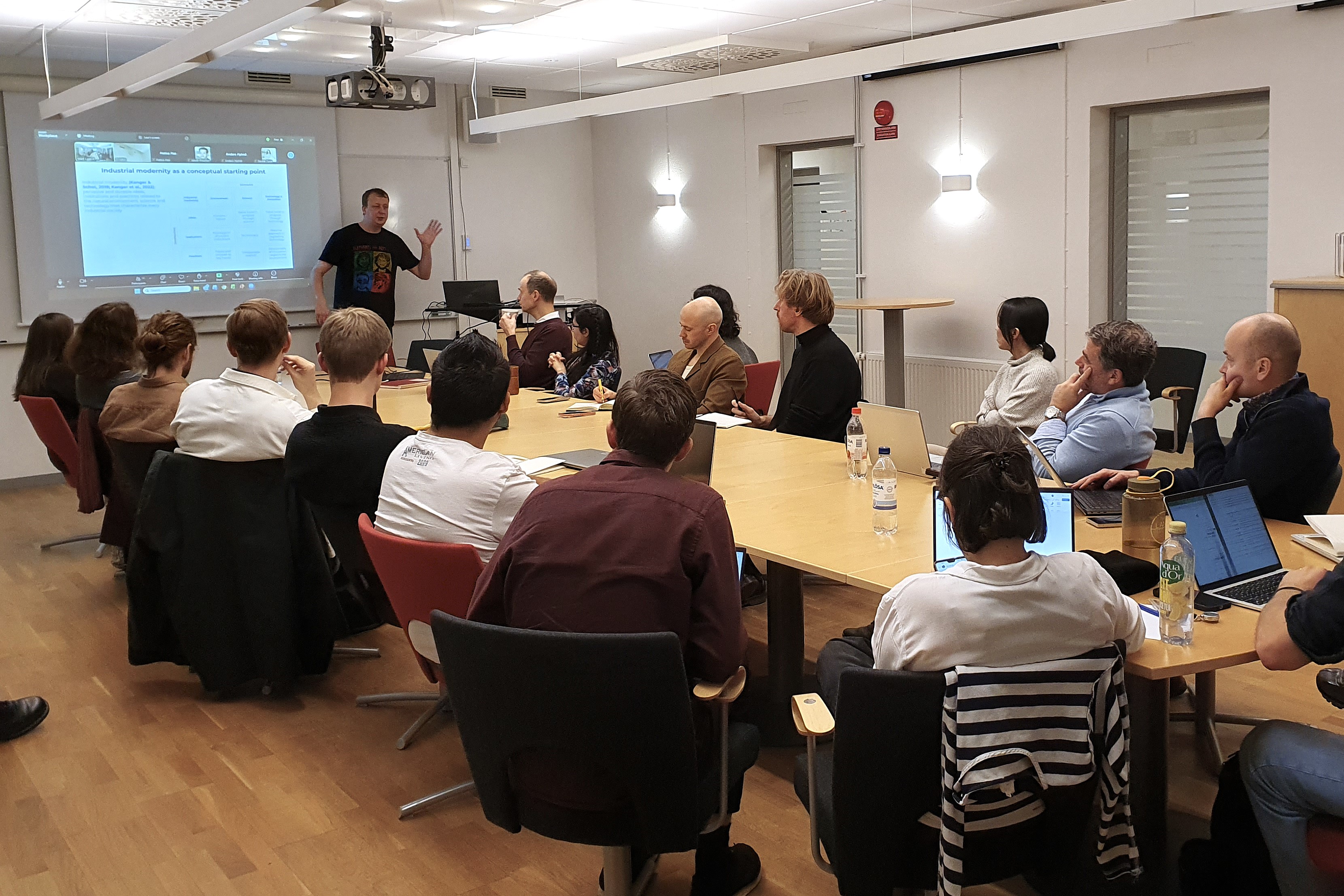Fixing 21st Century Problems with 19th Century Ideas? A Call for New Thinking
As we struggle with environmental and societal crises, there's a growing need to rethink the foundational ideas of industrial modernity according to Laur Kanger, Professor of Sustainability Transitions, who was the invited guest speaker at a policy seminar hosted by CIRCLE and SIRI.
– Published 6 November 2025

In his talk, Laur Kanger pointed out that industrial modernity has had a great impact on our society as the driver of the many science and technology advancements throughout history. However, for the socio-ecological crises we are currently facing, we need to find new solutions. Our view of nature, science, and technology has predominantly been the same for a very long time, and it continues to shape how we view sustainability challenges and formulate policy measures. In some cases, this has inadvertently exacerbated the issues we want to mend.
– Today, people born in the 21st century are trying to fix the problems created in the 20th century with ideas that have sprung from the 19th century, according to Laur Kanger.
The need to fundamentally rethink industrial modernity is addressed in his ERC Consolidator project. It aims to develop an innovative theory that provides understanding of industrial modernisation for sustainability science.
The seminar hosted by CIRCLE (Centre for innovation research) and SIRI (Swedish Platform for System Innovation Research in Interaction) was a hybrid one with attendance both online and in the meeting room at CIRCLE. One of the interested listeners was Johan Miörner, associate senior lecturer in Economic Geography, who summed up his impressions:
– Innovation studies usually focus on a micro or meso level – looking at individuals and organisations or other groups in society. The presented study is ambitious enough to take on a macro level perspective. It paints a bigger picture by including society as a whole and forms an interesting backdrop to what we normally study in the field of innovation.
Laur Kanger
You find more information on the work of Laur Kanger and his contact details via the link below.
